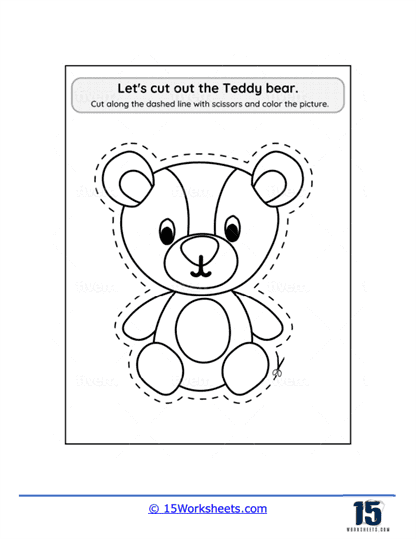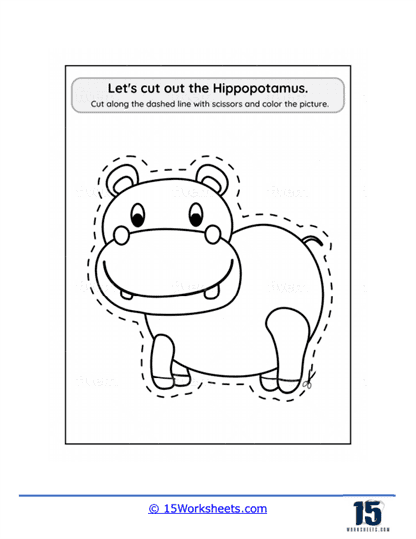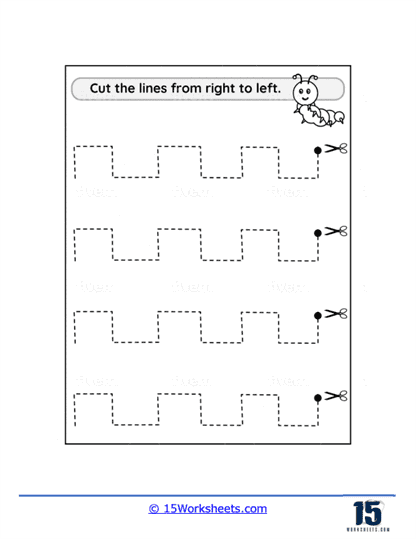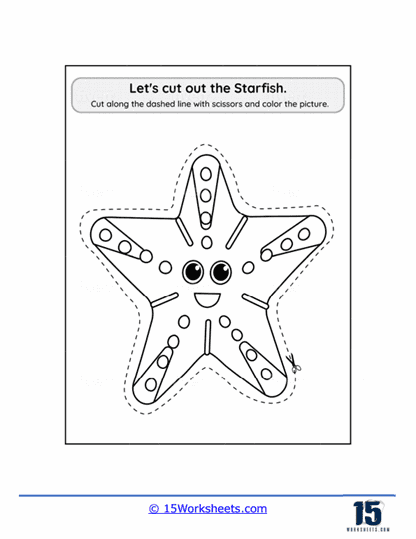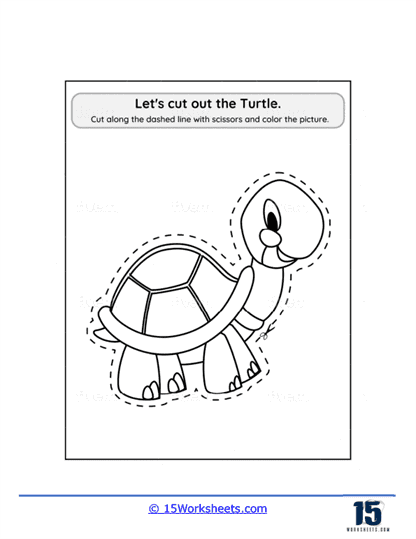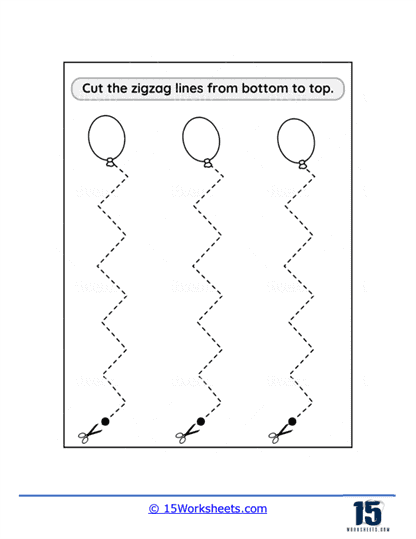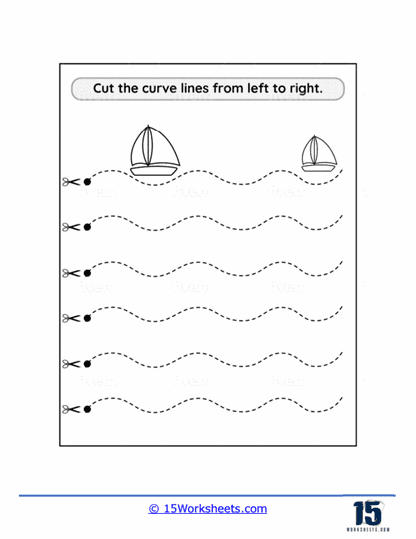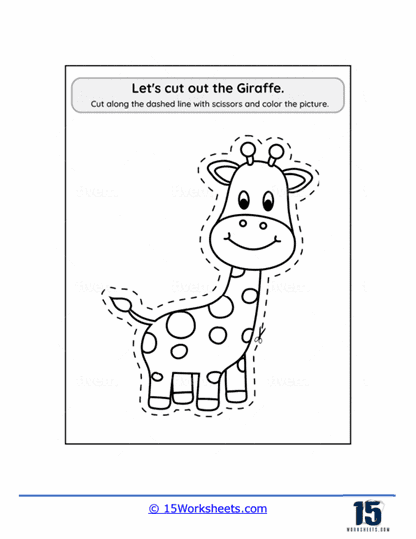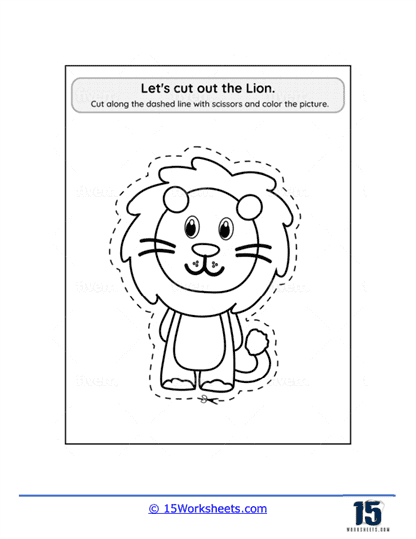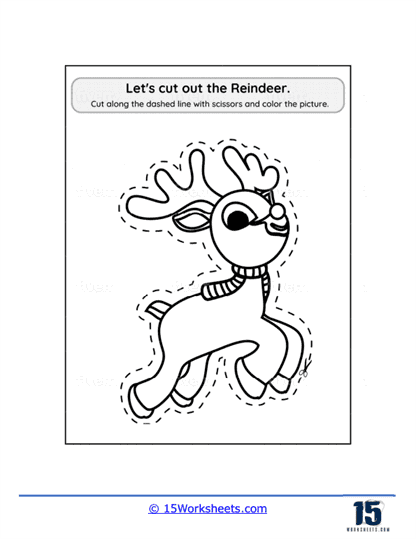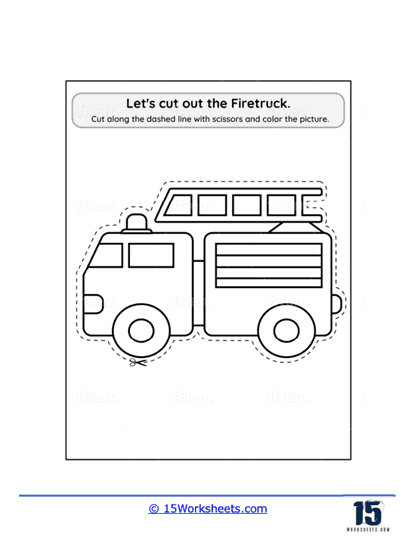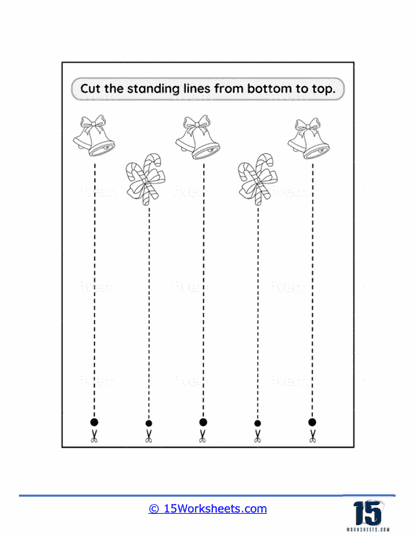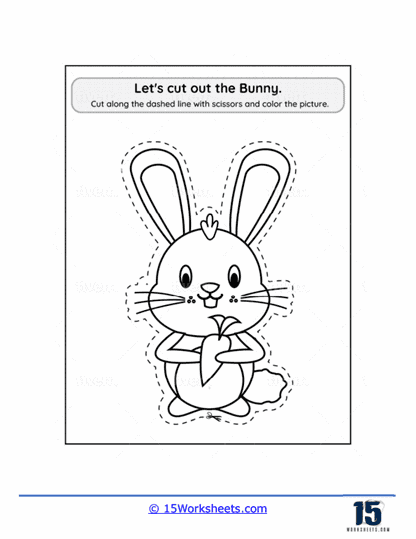Scissor Skills Worksheets
About These 15 Worksheets
Scissor skills worksheets are special papers filled with lines, shapes, and sometimes pictures that help kids practice using scissors. You’ve probably seen or used them when you were a little younger, and they’re mostly used by preschoolers and kids in the early years of elementary school.
You know how when you first started learning how to write, your teacher might have given you worksheets with dashed lines to practice tracing letters? That’s sort of what scissor skills worksheets are, but instead of a pencil, kids use scissors to follow the lines. This helps them develop their hand-eye coordination, fine motor skills, and their ability to concentrate.
Fine motor skills refer to the small movements we make with our hands and fingers, like when you button a shirt, tie your shoelaces, or even write with a pen. Hand-eye coordination, on the other hand, is all about how well your eyes and hands work together. For instance, think about playing video games, where you have to quickly press buttons while keeping an eye on the screen.
Now, these scissor skills worksheets can have a variety of lines – straight, curved, zig-zag, and more complex shapes. Younger children usually start with straight lines before gradually moving to more complicated ones.
The worksheets might also have pictures with a mix of these lines. For example, there could be a picture of a sun with rays extending out that need to be cut along the lines, or a picture of a tree where the child needs to cut out the individual leaves.
It’s not just about cutting, though. While using these worksheets, kids also learn how to hold the scissors correctly and safely. They learn that scissors are sharp and should be handled carefully, always pointing away from them and others.
Why Are Scissor Skill Important?
Scissor skills are important for several reasons, as they contribute to a child’s overall development, independence, and success in various activities. Here are some reasons why scissor skills are essential:
Fine motor skills development: Using scissors requires the coordination and control of small muscles in the hands and fingers, which helps to build fine motor skills. Developing these skills is crucial for performing daily tasks, such as writing, buttoning clothes, or tying shoelaces.
Hand-eye coordination: Cutting with scissors requires children to use their eyes and hands in a coordinated manner, which helps improve hand-eye coordination. This skill is important for various activities, including reading, writing, and sports.
Bilateral coordination: Scissor skills involve using both hands simultaneously, with one hand controlling the scissors while the other hand stabilizes and moves the paper. This ability to coordinate both sides of the body is essential for many daily tasks and physical activities.
Hand strength and dexterity: Cutting with scissors helps to build hand strength and dexterity, as it requires the use of various hand and finger muscles. Strong and dexterous hands are essential for performing many daily tasks and activities.
Cognitive development: Scissor skills involve following instructions, planning, and problem-solving, which contribute to cognitive development. Children must think about the shape they want to cut and plan how to move the scissors and paper to achieve the desired result.
Spatial awareness: Cutting with scissors helps to develop spatial awareness, as children must understand how shapes relate to one another and how to manipulate materials within a given space.
Creativity and self-expression: Scissor skills are essential for engaging in creative activities, such as arts and crafts. These activities allow children to express themselves, build confidence, and develop a sense of accomplishment.
Academic success: Scissor skills are necessary for various school-related tasks, such as creating projects, completing worksheets, or engaging in hands-on learning activities.
Independence and self-care: Developing scissor skills helps children gain independence in their daily lives, as they learn to perform tasks like cutting food, opening packages, or trimming their nails.
By helping children develop scissor skills, you can support their overall development and prepare them for success in various aspects of their lives. Encourage the development of scissor skills through practice, age-appropriate activities, and providing opportunities for creative expression.

